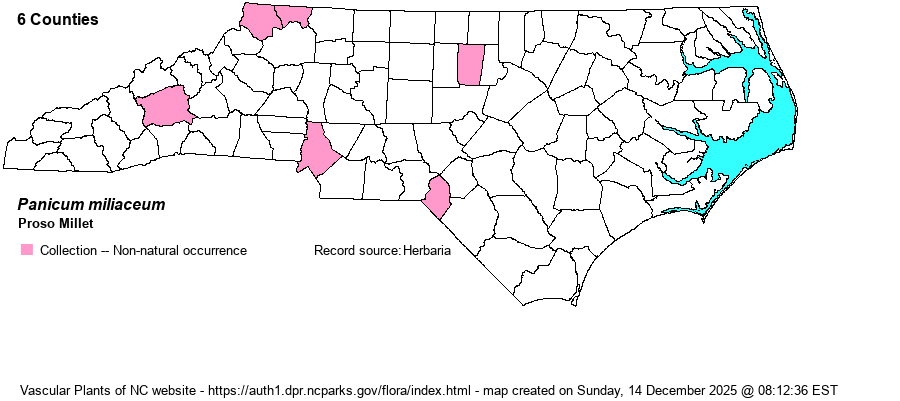| Author | L. | |
| Distribution | Scattered from the Sandhills and lower Piedmont to the Mountains. Likely occurs in other counties. However, it appears that there are very few, if any, truly established and perpetuating populations.
Native of Asia; in N.A. scattered throughout the U.S. and southern Canada. | |
| Abundance | Apparently rare and local, but to be expected almost anywhere. | |
| Habitat | Roadsides, fallow fields, crop fields, yard weed near bird feeders, wildlife food plot. This is one of the "millet" seeds used in bird seed mixes and also in wildlife food plots. | |
| Phenology | Flowering and fruiting July-October. | |
| Identification | In NC plants typicaly grow only 8 inches to 2 feet tall. The inflorescence is ellipsoid, composed of many short ascending branches with spikelets 4-6 mm long. | |
| Taxonomic Comments | The genus Panicum in the broad sense was once very large, but with the split of Dichanthelium in the 1980s, it has been reduced to manageable size. In more recent decades, other genera have been split off: Coleataenia, Hymenachne, Kellochloa, and Phanopyrum, as examples. All 6 of these genera can be readily told from each other in the field with just a hand lens. For a more detailed discussion, see the introductory paragraphs in Weakley (2018). | |
| Other Common Name(s) | | |
| State Rank | SE | |
| Global Rank | GNR | |
| State Status | | |
| US Status | | |
| USACE-agcp | | |
| USACE-emp | | |

